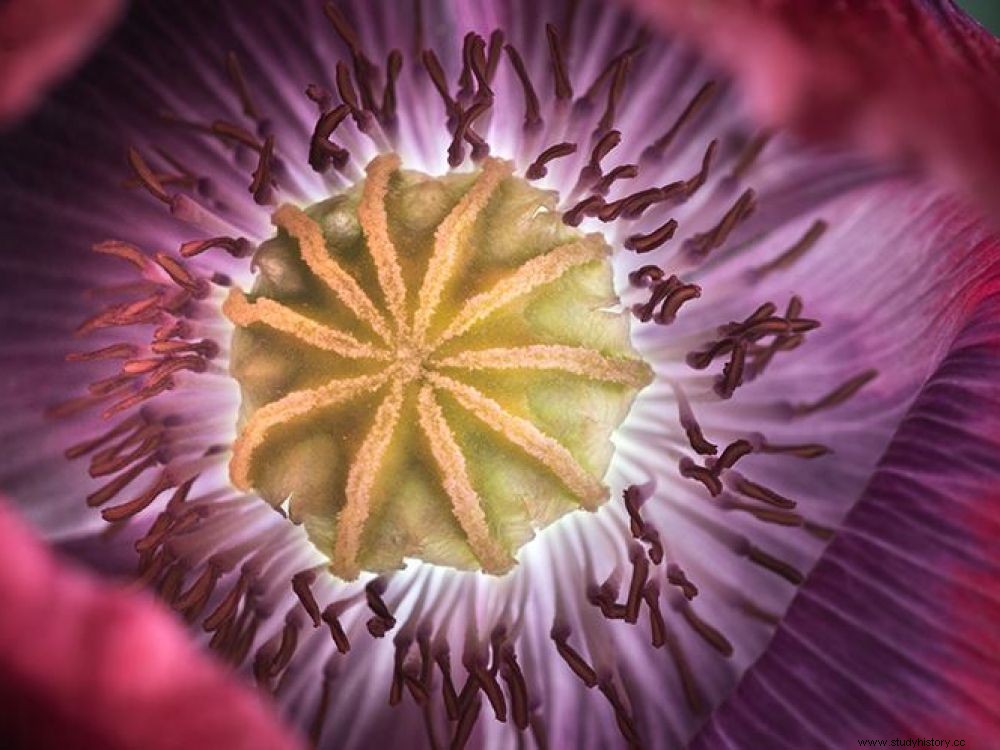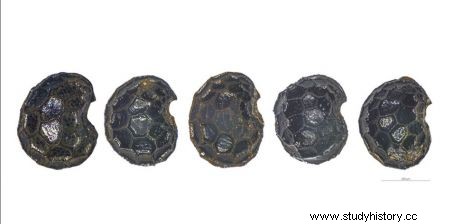Poppy plants were already growing in the Swiss Alps in the 6 e millennium before our era.

Opium poppy flower and capsule.
When discussing the cultivation of the opium poppy (Papaver somniferum L. ), it is the images of immense fields of colorful flowers dotted across the vast plains of Afghanistan that first come to mind... But it turns out that the opium poppy - the main source of world heroin - already bloomed more than 5000 years ago on the mountain slopes of Switzerland! A new analysis of archaeological seeds published in the journal Scientific Reports looks back at the domestication of this plant and its early diffusion in the Alps in the Neolithic period.
"This is the only plant known to have been domesticated west of the Mediterranean"
"Contrary to popular belief, the oldest poppy seeds have not been found in Southwest Asia but at archaeological sites in the Western Mediterranean - southern France, Italy and Iberian Peninsula , explains Laurent Bouby, archaeobotanist at the Institute of Evolutionary Sciences, in Montpellier (Herault). It is the only plant that we know of that was domesticated west of the Mediterranean, outside the Fertile Crescent, when all the others - cereals, legumes or flax - were domesticated in Middle East. It was used as food but may also have been used for psychotropic therapeutic use, although this is more difficult to prove."
When discussing the cultivation of the opium poppy (Papaver somniferum L. ), it is the images of immense fields of colorful flowers dotted across the vast plains of Afghanistan that first come to mind... But it turns out that the opium poppy - the main source of world heroin - already bloomed more than 5000 years ago on the mountain slopes of Switzerland! A new analysis of archaeological seeds published in the journal Scientific Reports looks back at the domestication of this plant and its early diffusion in the Alps in the Neolithic period.
"This is the only plant known to have been domesticated west of the Mediterranean"
"Contrary to popular belief, the oldest poppy seeds have not been found in Southwest Asia but at archaeological sites in the Western Mediterranean - southern France, Italy and Iberian Peninsula , explains Laurent Bouby, archaeobotanist at the Institute of Evolutionary Sciences, in Montpellier (Herault). (Des Papaver somniferum/setigerum seeds are reported in the archaeological archives from the 6th millennium BC). It is the only plant that we know of that was domesticated west of the Mediterranean, outside the Fertile Crescent, when all the others - cereals, legumes or flax - were domesticated in Middle East. It was used as food but may also have been used for psychotropic therapeutic use, although this is more difficult to prove." The opium poppy is thus found at the very beginning of the European Neolithic, its ancestor (Papaver somnifeum subsp. setigerum ) still growing wild in the western Mediterranean.

Opium poppy flower and capsule. © Raul Soteras, AgriChange Project.
Opium poppy grown in the Alps from the 6 e millennium BC. J.C.
Using a new method of analysis, researchers from the universities of Basel (Switzerland), Montpellier and the Muséum national d'Histoire Naturelle in Paris, show in their study that prehistoric farmers living in the Alps began to cultivate and use large-scale opium poppy as early as 4300 BCE. Seeds of P. somniferum dating back to this period have indeed been found in the Valais region, and fragments collected in quantity from lake sites, proof of their already widespread culture."Alpine lake sites are renowned for their very good preservation of remains plants, especially those that are not charred and therefore not deformed , says Laurent Bouby. But until now, there was no method to distinguish the domestic poppy seeds found on these archaeological sites from the seeds of the wild poppy" .

Opium poppy seeds recovered from the archaeological site of the Opera Parkhaus in Zurich. © Raul Soteras, AgriChange Project.
This has now been done thanks to geometric morphometry, a quantitative study of the shape and size of seeds carried out using contour analyses. "Applied as a test on several samples of modern seeds from the seed collections of the University of Basel and the National Museum of Natural History (MNHN) in Paris, this technique revealed subtle differences between domestic and wild variants" , continues the specialist. The transposition of this method to archaeological seeds collected in Swiss Neolithic habitats then made it possible to establish that approximately half of them were in their wild form, and the other half already domesticated.
From its Mediterranean home, the opium poppy spread very quickly, particularly to northern Europe (western Germany, Belgium, eastern France and the Paris Basin). The objective of the international team of researchers behind the study is now to reconstruct the entire process of domestication of the opium poppy, which genetic studies should also accompany.
